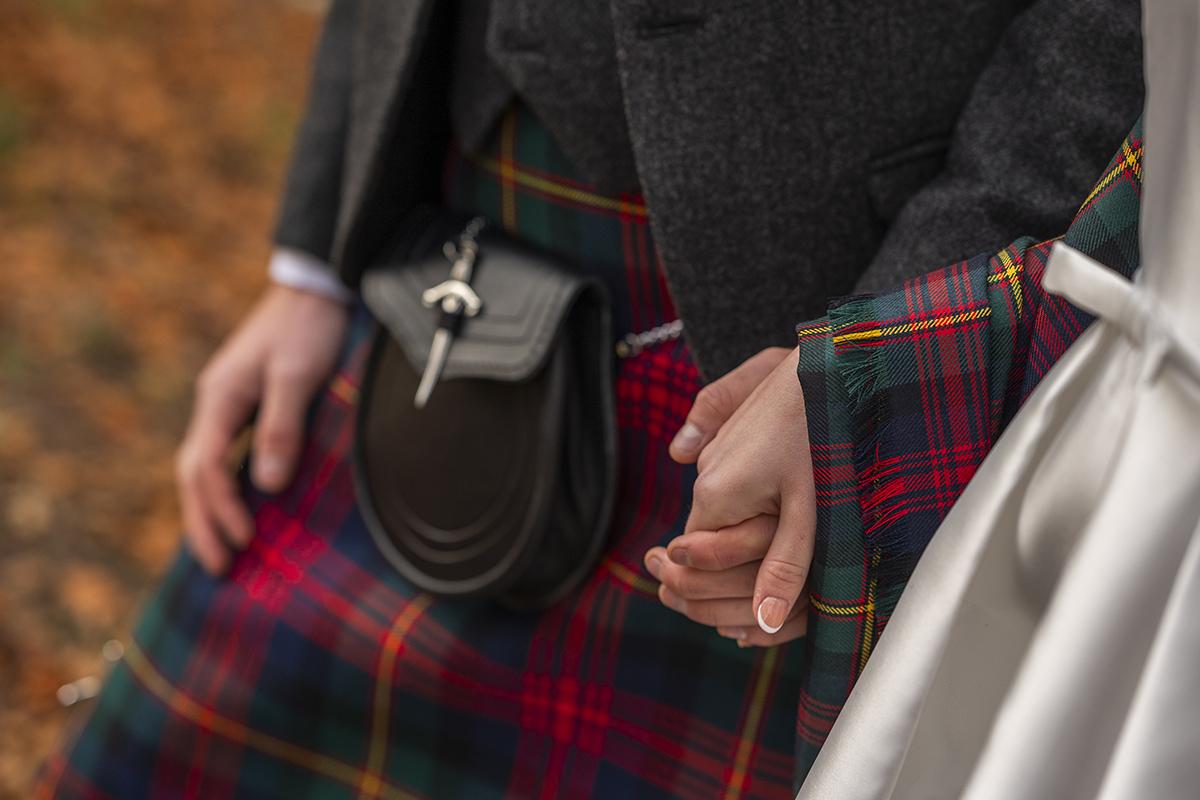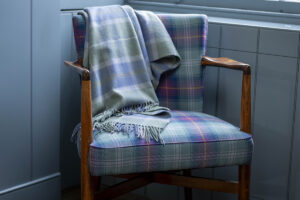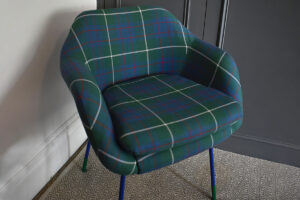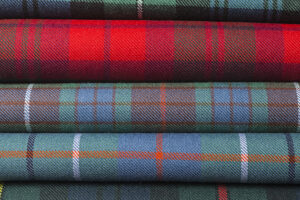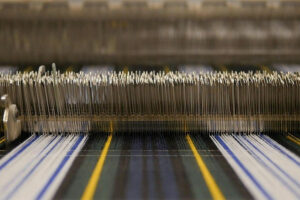How To Look After Your Kilt
We take great pride in the craftsmanship and care that goes into making each kilt here at Lochcarron. Usually, kilts are made from wool and our premium wool kilts are bespoke, crafted to fit your measurements, in the tartan of your choice, in the weight and style that is right for you. The benefit of a woollen kilt is that wool is a natural, resilient, and durable fibre, which allows for the creation of long-lasting attire. Likewise, our highly skilled kiltmakers hand sew our traditional heavy weight kilts using time-honoured techniques to ensure the highest quality garment is achieved. Designed to last for at least a lifetime and beyond.
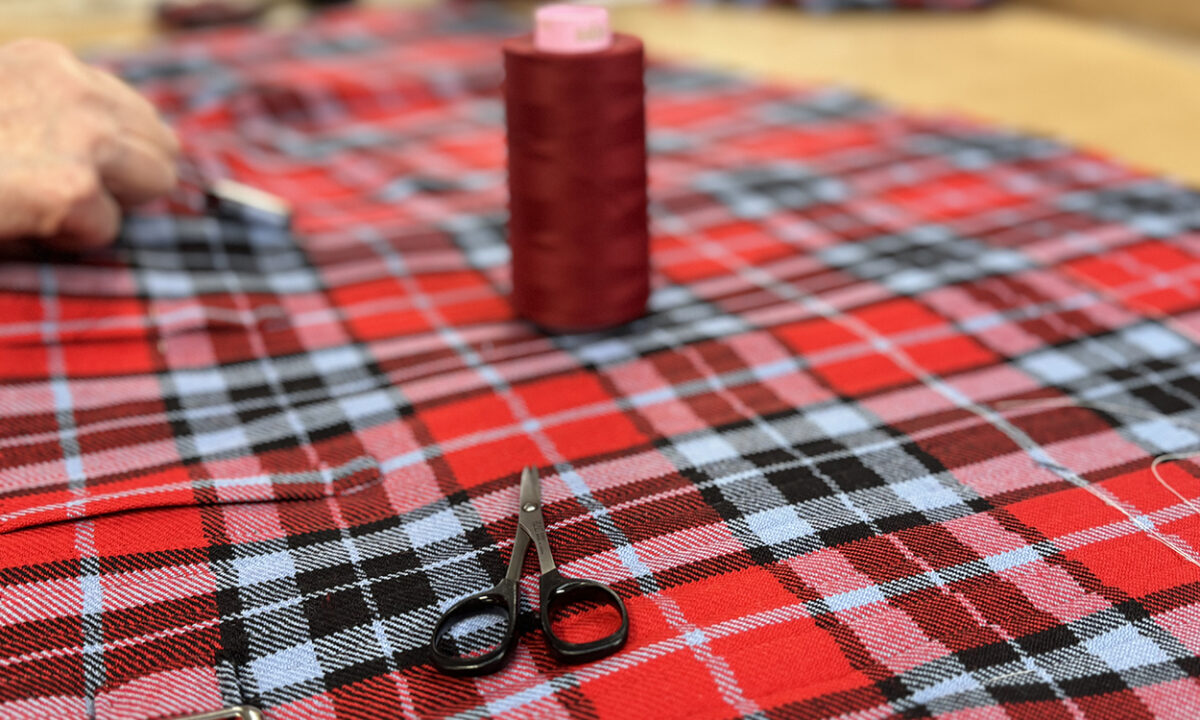
With this high level of quality and the expense involved, it is important to know how to store and care for your kilt to avoid costly repairs and maintain your kilt shape, pleating and general appearance, allowing it to look its best every time you wear it. To help you get the most out of your garment, we have created this guide on kilt care and how to look after your kilt properly, preserving this classic piece so that it can last a lifetime and beyond.
How to Clean Your Kilt
Firstly, check over you kilt to ensure there are no stains or spills. If there is or a spillage occurs while you are wearing your kilt gently dab the stain with a clean cloth and warm water. Make sure not to rub the stain and clean it as soon as possible. This should make it quicker and easier to remove. Light stains should lift without a problem due to the waxy coating on wool fibres, which make wool garments more resistant to staining and due to its anti-static qualities, less prone to gathering dust.
Alongside being resistant to staining, wool is very effective at absorbing and releasing sweat and other odours before bacteria can develop and produce an unpleasant smell. Wool stores away these odour molecules which are only released when the garment is washed. With these properties, kilts shouldn’t need to be properly cleaned often. If your kilt does require more cleaning, you can go to a professional dry cleaner. However, only do so if necessary and make sure to take your kilt to someone with experience cleaning wool kilts to avoid damage to the fabric or pleating.
How to Store Your Kilt
After you have checked there are no stains and are preparing to store your kilt away, your kilt must be completely dry. While wearing your kilt throughout the day moisture will be absorbed between the fibres from sweat, spills, and humidity. Therefore, you must allow your kilt to air and fully dry, if you do not, then it is possible for mildew to grow in the wool fibre which can be hard to remove. Hanging your kilt out to air for at least 12 hours after being worn, either in a warm well-ventilated room or if the weather is nice, outside in the sunshine. This should be enough to ensure your kilt is ready for the next time you wish to wear it.

Once your kilt is dry, we recommend hanging your kilt up with a hanger with at least 4 clips or a purpose made kilt hanger. Make sure to fasten the kilt buckles and use the clips to clamp firmly across the top of the kilt, securing both the front and back together. This is to allow the weight of the kilt to be spread evenly and avoid sagging in the middle which may lead to a misshapen kilt. Sagging can be a difficult issue to fix, and therefore, it is important to avoid this happening to your garment.
When storing your kilt away, ensure there is enough space in your wardrobe. Give your kilt room to breathe and don’t cram it into your closet. This allows it to retain its shape, remain crease free and minimise moisture build up. Likewise, use a garment bag to safely store your kilt and protect it from moths and dust.
How to Protect Your Kilt from Clothes Moths
Keratin, found in natural fibres like wool, is highly appealing to clothes moths. In the wild, their role is admirable, breaking down natural materials to return nutrients to the earth. However, they also enjoy the comfort of our cosy homes, and sadly, our cherished traditional wool kilts can end up on their menu, especially when left undisturbed.
Fortunately, we offer moth repellent products. These will keep clothes eating moths away, protecting your woollen attire from the damage they can cause and any associated repair costs. Preserving your treasured kilt against clothes moths is essential for maintaining both its appearance and longevity.
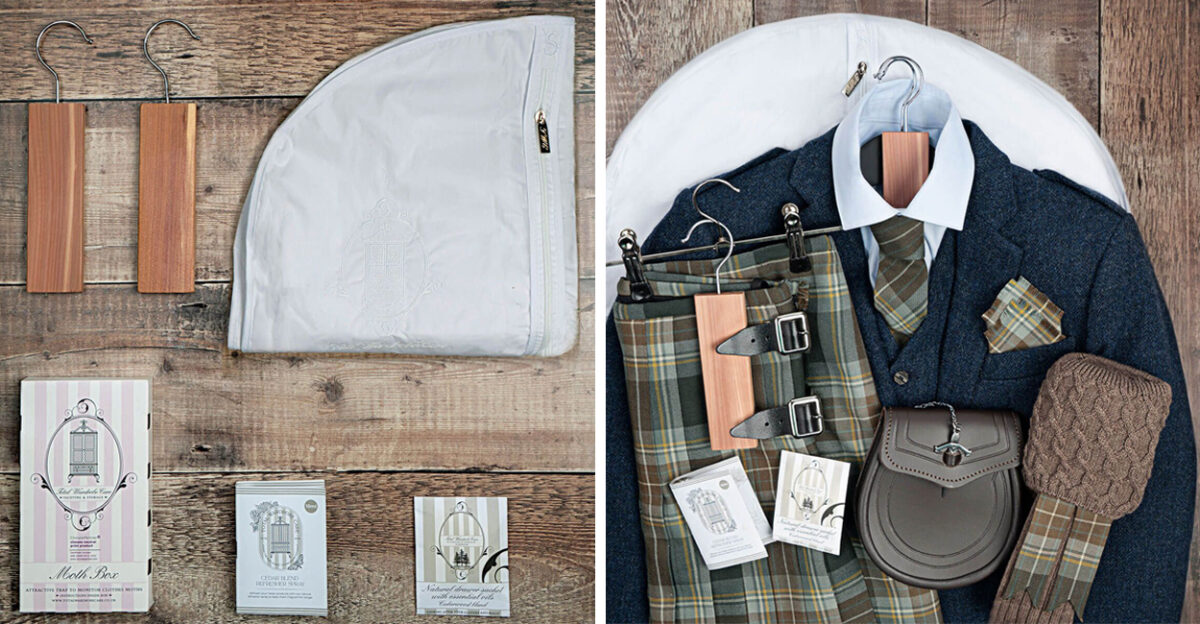
Moths despise certain natural fragrances, and we offer a selection of scented products made from organic plants and herbs that repel clothes moths while providing a refreshing aroma. For the ultimate protection from moths, we offer an anti-moth kilt care kit or explore some of the individual moth-repellent options. You can hang these products alongside your kilt or keep them in a drawer.
Additionally, make sure to pay attention to your kilt. Take it out for regular inspections and give it a good shake as moths dislike being disturbed. Better yet, wear your kilt out as often as possible - after all, kilts are meant to be seen and celebrated.
How to Pack Your Kilt
If you are planning on transporting your kilt to another location to get ready elsewhere, we offer kilt roll carriers. Our carriers come with a mat for you to roll your kilt safely inside, so you can protect it from creases and transport your kilt easily and swiftly to your destination.
How to Roll Your Kilt
- To roll your kilt, first, lay it out flat on a level surface on top of the mat with the apron (front) side facing down, making sure the buckles are secure.
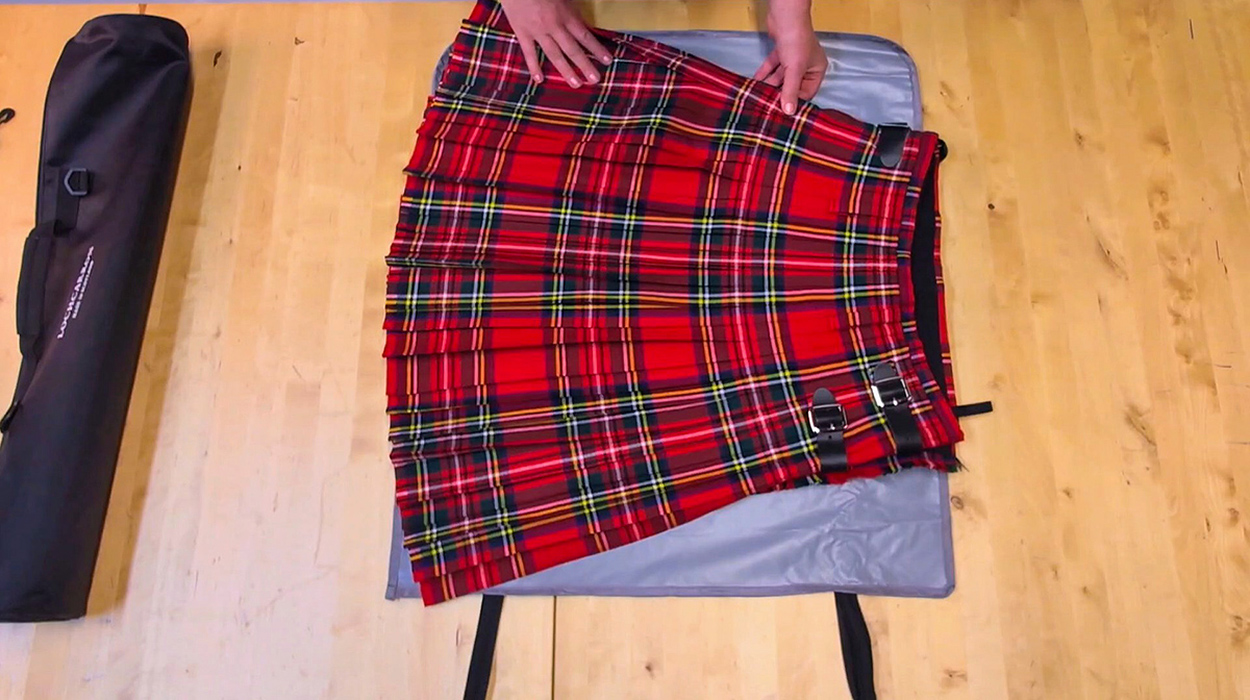
- Following the direction of the pleating, roll your kilt firmly but not tightly towards the fringed edge, ensuring the pleats are aligned and not twisted as you roll your kilt to prevent creases.

- When you have finished, secure your kilt roll by pulling the elastic straps over the ends to keep from unravelling. Pack it into your carrier and zip to fasten securely inside.

Watch our video for our step-by-step guide on how to roll your kilt.
If you are travelling by car another suitable choice would be to hang your kilt in a garment bag. We don’t recommend folding your kilt as doing so can cause creases to form.
If rolling your kilt is not possible and you don't have a garment bag, packing your kilt into a case is another alternative. Ensure to place your kilt flat at the bottom of your suitcase and hang up as soon as you arrive at your destination. However, this method may cause your kilt to crease.
How to Smooth out Creases
If you do end up with creases, hang your kilt in the bathroom and turn on the shower (avoid hanging up in the shower so it doesn’t get wet). The steam created from the hot water should gently smooth out any creases. If you notice creases after wearing your kilt out at an event, you can use this technique at the end of the night before allowing it to air out, as mentioned previously. To avoid creasing while wearing your kilt it is good practice to smooth the pleats with your hands before sitting down.
How to Press Your Kilt
Modern kilts shouldn’t need to be ironed or pressed as the pleating should hold their shape. If your kilt does need ironing, this should be done with care. Before beginning, turn your kilt inside out and use an ironing cloth to protect the wool fibre. We don’t recommend pressing directly onto the wool garment as this can leave a sheen on the fabric. Ensure that you set your iron to a low temperature, using the steam option and that you only press the kilt with the iron. To press your kilt, place your iron gently on the cloth for a few seconds, lift the iron and then repeat this process on a new section, continuing until complete. This should allow you to remove any creases or maintain your pleats if necessary.
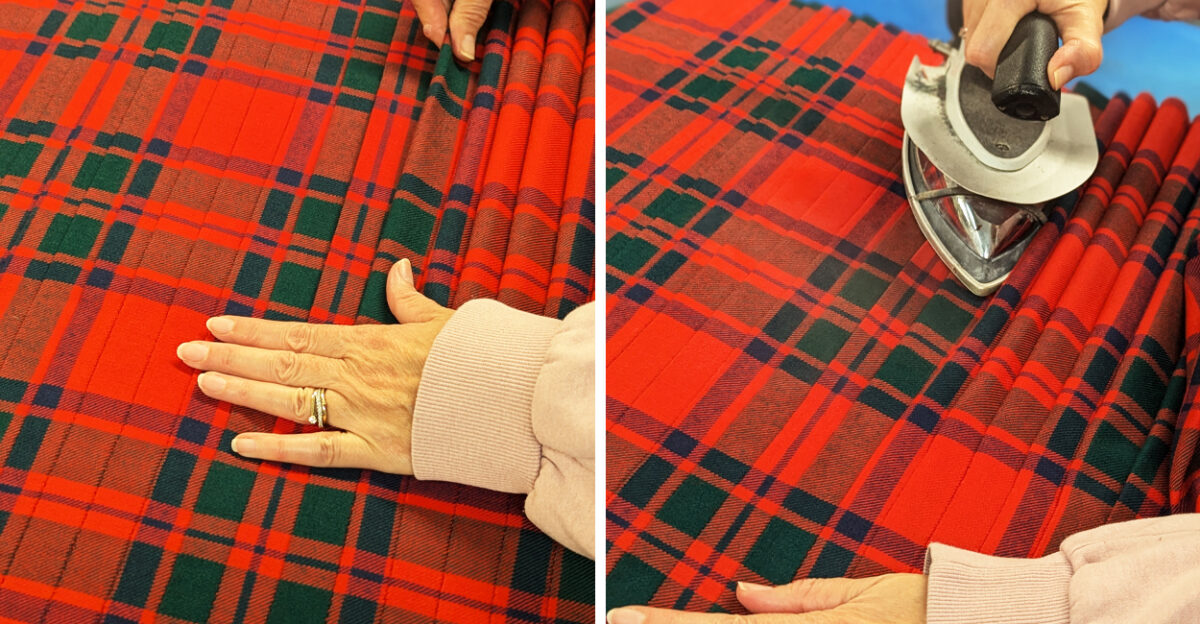
It is important to note that you should never iron your kilt in the back-and-forth motion you would typically use to iron clothes as this movement can compress the wool fibres and create a distorted appearance. Remember to pick up the iron and place it on each section you wish to smooth. If you are unsure or having issues flattening out creases, take your kilt to a professional rather than trying to fix yourself.
A traditional kilt is a piece of history, identity and something worth guarding fiercely. Protecting your kilt ensures it remains a testament to Scotland's timeless legacy for generations. However, despite being an investment piece, it requires minimal effort to care for your kilt properly. We hope this guide helps you to look after your kilt. If you take the time to follow our guidance after every wear, you should be able to maintain the beauty of your kilt for years to come.


